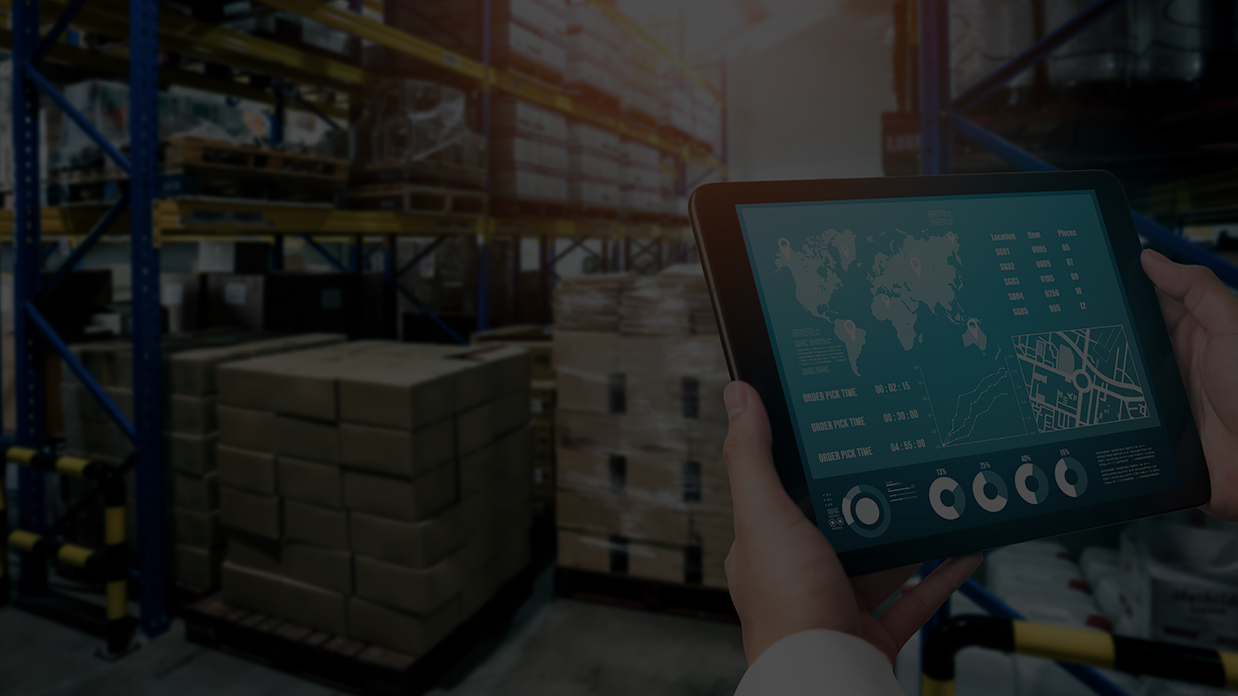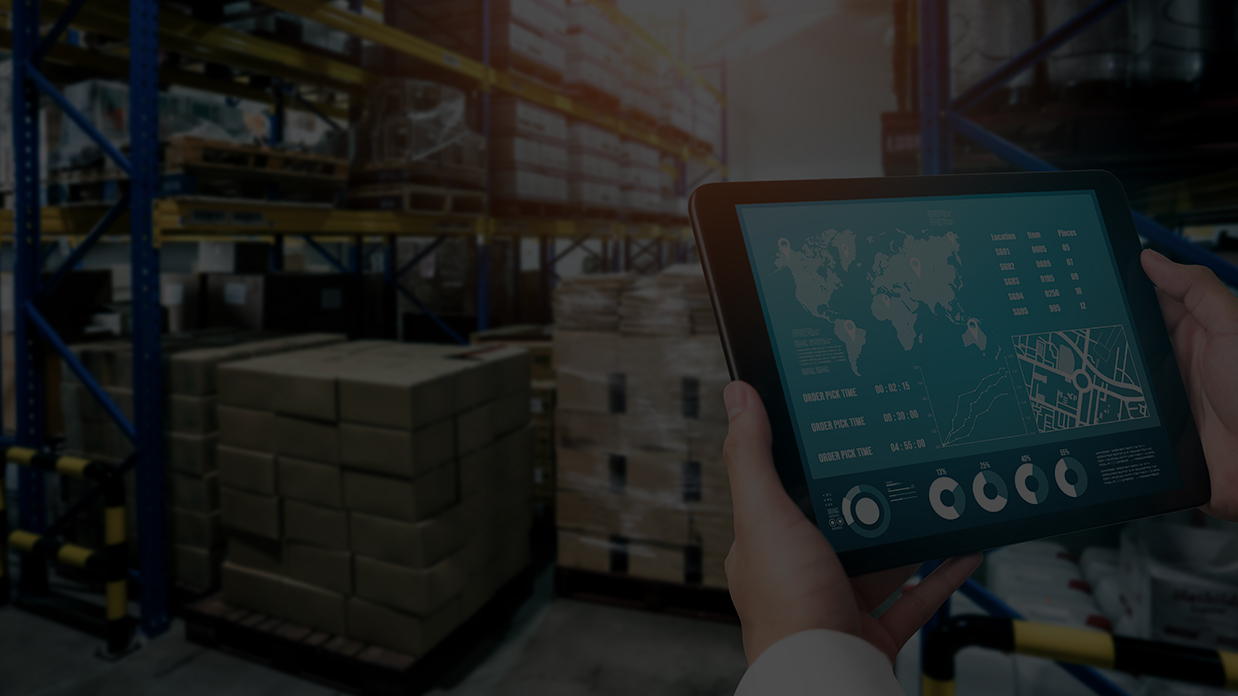Managing global supply chains is difficult without end-to-end supply-chain visibility, and the recent global upheavals have proven just that. Disruptions in production, labor shortage, limited resources, surging customer demands, inflation, soaring logistics costs, and the pressure to adopt sustainable practices to stay relevant, have shaken the global business community to look at how the supply chains are managed.
Adding to the above are the challenges faced in integrating disparate network partners and outdated processes, forcing businesses to consider adopting supply chain visibility software.
What is Supply Chain Visibility (SCV)?
The ability to track and trace all of your materials in real time across the supply chain, forward or backward, is termed supply chain visibility. In other words, it helps locate the raw materials from suppliers to facilities effortlessly to deliver the finished goods to the customer in a timely and orderly manner.
Supply chain visibility software provides information about inventory moving through the supply chain operations to the customers, all in real time. Such visibility ensures accountability throughout the supply chain — be it processes or supply chain partners.
Increased end-to-end visibility in the supply chain ensures savings in costs and time and creates value for the customer.
Types of Supply Chain Visibility
The way forward is to adopt end-to-end visibility in global supply chains that can provide real-time data for decision making that affects an enterprise's fundamentals – profitability to statutory compliance.
The five types of supply chain visibility vital for adopting a complete digital transformation are:
- Rates visibility
- Visibility into shipments
- Demand and supply visibility
- Inventory visibility
- Supply chain activities visibility
Also Read: Elements of A Responsive Supply Chain
Why is Supply Chain Visibility Crucial?
Supply chain visibility helps build internal and external resilience in an enterprise and its networks. And in a constantly changing business environment, resilience is what has started to matter the most.
Improving end-to-end visibility enables increased collaboration between buyers and suppliers, leading to lower disputes, precise risk anticipation, better agility and control of supply chain processes, higher customer satisfaction and higher profits. Not surprisingly, firms that have complete supply chain visibility see substantially higher earnings.
Issues Affecting Supply Chain Visibility
A business failing to observe or pinpoint problems or challenges in its supply chain will be unable to rectify them. Therefore, supply chain visibility in real time ensures business efficiency, agility and resilience. However, there are a few challenges that adversely impact the state of supply chain visibility. These are as follows:
- Diverse management systems within and without an organization
- Silos within verticals and teams
- No access to real-time data
- Lack of communication between supply chain partners and all other stakeholders
- Ad hoc/unauthorized spend on sourcing
- Poor supply chain processes, such as poor inventory management
- Poor risk anticipation
- Lack of technology adoption due to internal resistance or high acquisition cost
Solutions and Tools to Enhance Supply Chain Visibility
Supply chain visibility determines which processes require improvement for effective end-to-end supply chain software. Supply chain leaders may be aware of issues cropping up in their supply chains; however, without visibility, they wouldn’t know what’s causing them or be able to take action proactively.
End-to-end visibility enhances supply chain operations by adopting an advanced specialized software solution with the following capabilities.
Real-time supply chain data
Data in real time can help monitor demand-supply, crucial events, various KPIs, shipment movement and transactions. All this is provided as detailed reports and actionable insights.
Integrated with capacity and demand planning
By leveraging real-time and historical data, accurate forecasting for demand is visible. Forecasting helps better capacity utilization and ordering.
Collaboration and multitier supply chain visibility capabilities
Multitier supply chains mean the collaboration between a buyer and multiple suppliers within a supply chain. By getting visibility into this aspect, buyers can share vital information such as forecasts, orders and inventory with multiple suppliers.
AI-powered insights
Artificial intelligence, with its algorithms, provides deep insights for decision making. Over time, AI can learn to self-correct and provide even more accurate information and recommendations to mitigate supply chain risks.
Intuitive user experience
A technology platform providing an intuitive interface ensures users get more work done by helping them focus. This improves efficiency and quality of work output.
Digital Control Tower
The central dashboard of the digital control tower enables end-to-end visibility of all workflows. It provides more control of the supply chain processes to help analyze the effect of any deviation seen in the supply chain.
Predictive Analytics
Predictive analytics analyzes data patterns and flags the user for proactive handling of potential problems in the supply chain.
Also Read: Checklist for Choosing Supply Chain Visibility Software
How to Achieve End-to-End Supply-Chain Visibility?
Enterprises can achieve end-to-end supply chain visibility by first defining their objectives. This, in turn, helps in selecting the appropriate technology. The third step is to put in place the right team. Then decide on a strategy for managing data that provides insights and ensure decisions on these insights are taken proactively. Supply chain leaders must also encourage transparent communication between the stakeholders by sharing real-time information. Finally, replace the old processes with new ones aligned with the new digital transformation.
History of Supply Chain Visibility and SCV Solutions
It started in the early 2000s when enterprises tweaked their management control systems to receive fairly accurate visibility of a few products. In 2010, several technology companies started storing EDI data within a data aggregator and marketed them. However, most companies built their aggregation tools for accessing visibility in their supply chains.
By 2015, software companies realized the opportunity to create supply chain visibility software and started promoting their SCV solutions and control towers. The SCV software is built with the latest AI, data and predictive analytics technologies that provide seamless information on almost all aspects of an enterprise.
Examples of Supply Chain Visibility
One of the world's top travel and hospitality companies wanted to drive savings to its bottom line.
A cross-functional team leveraged the GEP Suite 5.0 platform to support the sourcing process by collecting essential data. Recommendations were implemented, resulting in over 13% savings in 10 months. (Explore more with this Travel and Hospitality case study)
Global Supply Chain Visibility – A Quick Overview
Although 2021 was the year when businesses and economies worldwide were to stabilize and bounce back to pre-pandemic times, we must accept that this is a myth. We have now progressed to a dynamic world where disruption is the norm.
Complete supply chain visibility enables processes and teams managing inventory movements even in times of disruptions to function efficiently and thrive — without sacrificing on operational agility and product quality.
Global Supply Chain Visibility – Terms to Know
Supply chain visibility is a complex subject, made even more complicated by technological jargons.
We give information on some of the essential terminologies here.
- API – Application Program Interfaces. Various applications exchange information with each other through API. It is thus called the language of the internet.
- RFID – Radio Frequency Identification. This is a device or tool to transmit various digital data of an object or asset, such as the item's name, part number and asset location.
- ELD – Electronic Logging Device. These are GPS-enabled devices placed on trucks and trailers for tracking and tracing in real time and for monitoring the overall status of the vehicle.
- RTTVP – Real-Time Transportation Visibility Platforms. This technology tool collates information from telematics sources, analyzes and provides interpretation for decision making.
- Telematics – The data received from devices such as ELD, RFID and other related devices are called telematics.
The latest Trends in Supply Chain Visibility
The latest trends are to further supply chain visibility software using advanced technologies, such as artificial intelligence, analytics and machine learning, which can decode raw data to arrive at insights for decision making. These technologies also help businesses to anticipate disruptions and prepare for them proactively.
Another trend is where one of the technologies incorporated into the control tower maps the supply chain networks of various clients and scans tens of thousands of web pages. It also goes through third-party content and monitors social media networks using AI and ML to provide faster notifications of real potential risk situations and ignore inaccurate concerns.
Conclusion
Visibility would probably be different for different businesses. But all businesses must start improving their supply chain visibility by deciding the goals they wish to achieve and deciding to what extent they are committed to allowing information exchanges with key stakeholders. These two aspects directly impact the benefits we can have from improving the scope of visibility.
Using next-generation technology makes processes more effective, enabling greater efficiency and reduced costs.
Frequently Asked Questions
Supply chain visibility is the ability to track and trace all of your materials in real time across the supply chain – whether forward or backward.
An agile supply chain reacts rapidly to disruptions – any changes, unforeseen delays and events, to live up to the customer's expectations, be competitive and thus achieve enhanced growth.
The processes needed to achieve supply chain visibility require cross-sharing of knowledge and information across all stakeholders. This sharing is possible by adopting the latest visibility software that ensures complete integration of all supply chain partners and their systems, enabling businesses to react to changing environments and remain competitive.
End-to-end supply chain visibility software provides information about your inventory moving through the supply chain operations to your customers, all in real time. Such visibility ensures accountability in your processes and your supply chain partners. Such end-to-end visibility in the supply chain saves costs and time and creates value for the customer and the enterprise.
One of the goals of supply chain visibility is to adapt rapidly to changing situations and thus remain competitive. This agility is ensured by adopting the latest visibility technologies that integrate all supply chain partners and systems.











